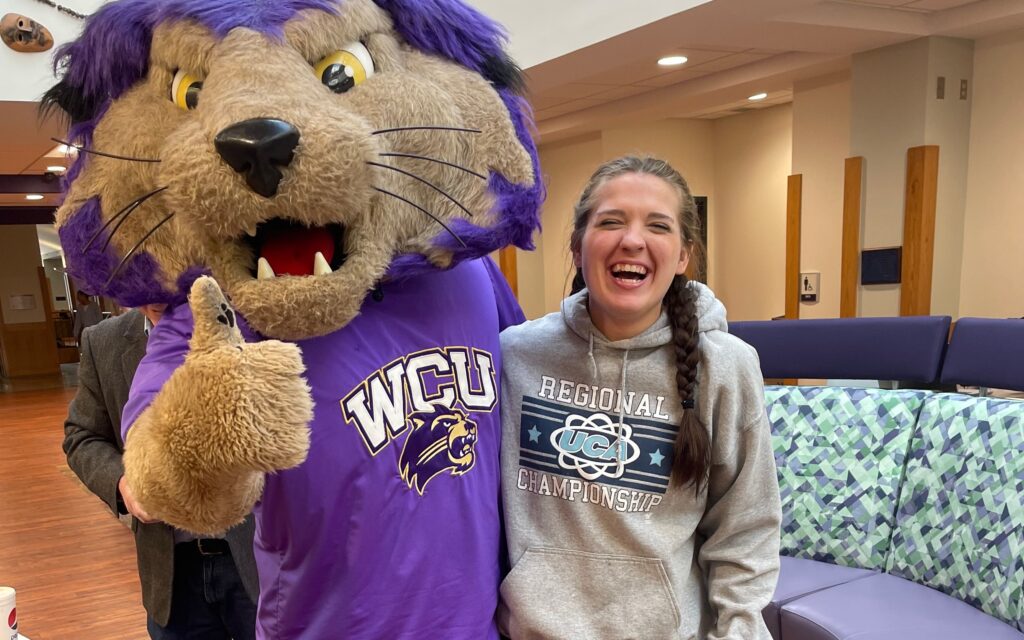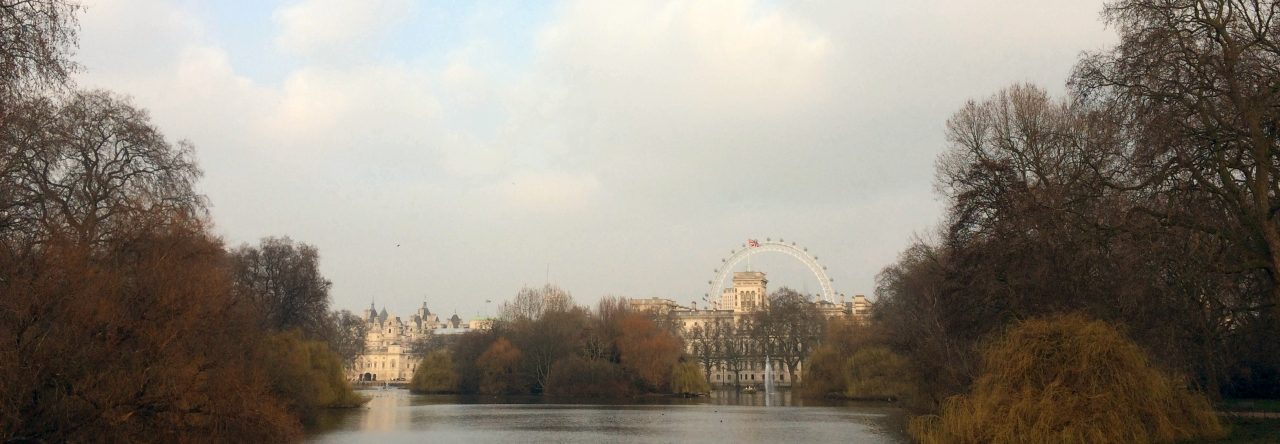
The joys and exhaustion of becoming a college mascot
Tuesday we hosted an event on campus to kick-off our month-long “I Love WCU” celebration. We set up a couple of tables at the university center, we hand out cookies, we generate good will. It’s a fun event, and the most worthwhile part is hearing from students about the things they love most about their alma mater.
The unexpectedly fun part, though, came after the fellow who normally plays Paws, the WCU mascot, called in sick. Rebekah, one of my colleagues, called to let me know. Back in November, Rebekah portrayed the mascot herself in a commercial we produced for Giving Tuesday, but she suggested this time I should don the suit instead. I was wary at first, and later I would find out why she was happy to pawn this off on me, but eventually I agreed. The athletics staff delivered the mascot costume, and I jumped in.
Well…jumped isn’t exactly the right word. You have to carefully strap into the get-up. It took probably ten or fifteen minutes to get it all assembled–not that it’s that difficult, but mostly that the more implements you put on, the fewer fine motor skills you have left. It’s a bit like a band uniform–overall bottoms, covered by a pull-over top (padded, muscular, not English-major-ish at all) that are directly connected to the cat’s hands. You strap on humorously large sandals that are its feet, and you pull on an oversized head connected to a football helmet. Once you’re in, you’re in. There’s no quick exit.
There’s an opening in the cat’s mouth about the size of an iPhone that lets you see out–but even that is covered by black, mesh fabric. The interior carries the lingering smell of a sweaty locker room. When fully assembled, the costume renders you into a human baked potato. I was sweating before I finished getting dressed.


